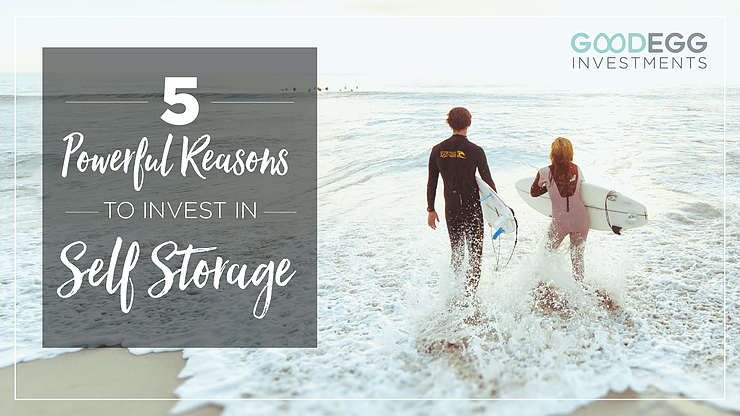What do you hope to do when you retire? Will you sit on the beach all day? Travel the world? Sleep in every day? Yes, yes, and yes. I fully plan on all those things too.
These days, roughly ten thousand baby boomers are retiring every single day. Many of them have grand plans for retirement, to include travel, golf, and spa days.
In some cases, they are also considering downsizing and moving to warmer climates or closer to family. Often, this is because the time and energy it takes for the upkeep of a large house is just not worth it, especially when they could be spending that time traveling or playing with grandchildren instead.
And what happens when you downsize from a five-bedroom house to a two-bedroom apartment? Well, often, a garage sale. But there are certain items, often with sentimental value, that just cannot be laid out on a folding table for bargain hunters to dig through.
Often, those items get packed up and stored in a self storage facility. In fact, as US apartments are getting smaller in size, an increasing number of households are turning to self storage for all their extra stuff.
Self storage is even joining the online revolution, to make the process as easy and barrier-free as possible. With full-service self storage, you can now schedule a pickup via an app or website. Then, just pack up your goods at home, and someone will come and pick them up, store them for you, and bring them back when requested. Sounds like magic, right?
All this has led to an increase in demand in self storage, and the asset class is garnering the attention of seasoned and newbie real estate investors alike.
Earlier this year, I made my first investment into self storage. It’s a fantastic, low-risk, stable investment that adds diversity to my portfolio, and I fully intend to continue investing in this asset class, for these five powerful reasons:
- Increased Demand
- Recession Resistant
- Low Overhead Expenses
- Low Breakeven Occupancy
- Low Turnover
#1 – Increased Demand
Self storage is in demand now more than ever, especially as the population continues to rise. There are three main groups of people contributing to the increased demand in self storage:
- Baby Boomers
- Young Professionals
- Small Businesses
Let’s start with the baby boomers. For many of those retirees, they’re looking to sell the house with five bedrooms that they raised their kids in and instead, move to a warmer climate, perhaps closer to grandchildren, and rent a smaller apartment.
What happens to the precious furniture, the nostalgic knick knacks, and the photo albums they’ve accumulated over the years? You guessed it, into a self storage unit they go!
The second group that’s looking to self storage more and more are young professionals. In previous generations, these young professionals tended to settle down, buy their first homes, and form families earlier. These days, people are choosing to wait longer and are often moving around more, leading to increased need for self storage.
The third group is one that most people don’t think about. With the rise of e-commerce, it’s easier now than ever before to launch a new product and an online business. To keep overhead expenses low, many of these fledgling businesses look to self storage as mini warehouses for their products.
Together, baby boomers, young professionals, and small businesses have contributed to strong and increasing demand for self storage across the country.
#2 – Recession Resistant
I majored in psychology in college. I got an inside look at all the various phenomena related to human behavior. As I see it, human behavior and self storage are closely linked, and perhaps more so than with other real estate asset classes.
The human behavior related to buying, accumulating, and keeping stuff uniquely positions self storage to do well in both good times AND in bad times.
In good times, people tend to more freely accumulate stuff. Rather than stuff they need, this tends to be stuff they want, because they have more money for it. Stuff like snowboards, and fancy handbags, and the latest gadgets.
As this stuff starts to clutter up their space, people tend to seek out self storage, rather than eliminating the stuff they don’t need anymore.
On the flip side, during a downturn, self storage also fares well. But how can this be possible, you ask. Well, during bad times, people tend to have less money to play with.
Rather than buying new stuff, people are faced with downsizing. But they know that tough times likely won’t last forever, so rather than get rid of that snowboard, they store it in a self storage unit.
So you see, self storage is uniquely positioned to do well in both good times and in bad times, making it one of the most stable and reliable real estate investments, and a terrific hedge against a potential downturn.
#3 – Low Overhead Expenses
This one is a no-brainer. When you invest in other asset classes, like apartments, there can be tons of overhead costs. You have to factor in things like property management fees and salaries, and capital expenditures in case the roof needs repair or hot water heaters break down.
With self storage, operating costs are very low. Why? Because we’re literally renting out empty rooms. Self storage units have no pool maintenance needs, no pest control costs, no need for upgraded flooring or light fixtures. This means that maintenance and repair costs are very low as well.
In addition, you can staff a huge self storage unit with minimal personnel. This means that salary costs remain low as well.
#4 – Low Breakeven Occupancy
The combination of low overhead expenses, together with low cost per unit, leads to a lower breakeven occupancy for self storage than for other asset classes.
On average, the breakeven occupancy for self storage facilities is around 40 to 45 percent. This means that, on average, even if 60 percent of a self storage facility is empty, the income would still be able to cover the expenses. You wouldn’t make much profit, but at least you wouldn’t be losing any money.
On average, if even 50 percent of the facility is rented out, the investment is profitable. That leaves a huge buffer for potential what-ifs, thereby minimizing risk.
#5 – Low Turnover
When you move into an apartment, you’re most likely signing a one-year lease. When you rent out a self storage unit, however, you’re likely signing a month-to-month lease.
But that sounds risky, you’re thinking. What about all the potential turnover?
Remember that human behavior I mentioned? Well, it comes into play here too. Because, you see, it takes a lot of work to move all your stuff into a storage unit, and most people don’t want to fill up their weekends lugging their stuff around.
So, even though you have the option to move it to another storage unit across town just one month later, what are the chances that you’ll want to deal with that hassle? Exactly.
This is what leads to people renting out storage units long-term, even with multiple rent increases a year. That’s right, the advantage of those month-to-month leases is that we can increase rents faster than we could in an apartment with a one-year lease.
Often, self storage can sustain higher rent increases than apartments as well, and here’s why.
Let’s say you rent a self storage unit for $100 per month. A few months later, you get a notice that your rent is increasing to $106 next month, an increase of 6 percent.
Whereas a 6 percent increase in rent on a $1,000 apartment is significant, a 6 percent increase in rent on a $100 self storage unit is barely noticeable. Most likely, you’re not going to move all your stuff to another self storage facility across town just to save $6 per month, so you stay.
Hence, the shorter-term leases can actually work to investors’ advantage.
Recap
There are many reasons for my newfound love of investing in self storage facilities. My top five reasons, as mentioned above, include:
- Increased Demand
- Recession Resistant
- Low Overhead Expenses
- Low Breakeven Occupancy
- Low Turnover
Self storage might not have as big an impact on people’s day-to-day lives as an apartment building or a manufactured home park, but I know that more and more people need self storage to store their belongings so they can live the lifestyle they want, whether that includes traveling, downsizing, or even having some seasonal items to play with.
So the next time you drive past a self storage facility, take notice. Think about the tenants who are storing their things there, and the potential impact that extra space is making on their lives.





